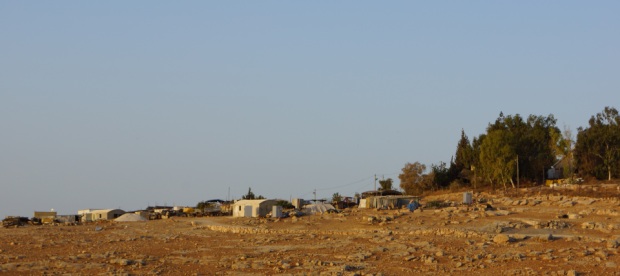UPDATE: We learned on the morning of June 25, 2014 that Jalil was turned down for parole yet again. He wrote to me and my husband that there had been one sympathetic person on the parole board, but she must have failed to convince one of the other two people. I feel so sad, because I know from letters he wrote to me and my husband that he had allowed himself to hope.
In previous blog posts I wrote about a visit to Attica prison and my conversation with Jalil Muntaqim, a member of the Black Panther Party who was swept up in the COINTELPRO prosecutions/persecutions of J. Edgar Hoover’s FBI in the 1970s and has been incarcerated since 1973.
was swept up in the COINTELPRO prosecutions/persecutions of J. Edgar Hoover’s FBI in the 1970s and has been incarcerated since 1973.
During our visit in April, we were talking about our writing and my husband brought up, a little to my chagrin, my novel, The Price We Paid, and suggested that Jalil’s opinion on it was worth having.
Now, the thing is, my main character, Islam Goldberg-Jones is a political prisoner incarcerated for three decades for a crime he did not commit. Even though the fascist Christian Republic government has fallen by the end of the novel, he remains in jail because the federal judiciary remains filled with Christian Republic appointees. I actually had in mind COINTELPRO prisoner Leonard Peltier when I subjected Iz to life in prison. (I had this fantasy that if the novel were published I would follow up with a novella or short story that frees Iz on the condition that Obama pardon Peltier—but it looks unlikely at this point that the book will be published while Obama is still in office.)
So, I never thought I’d have the chance to have an actual COINTELPRO prisoner read the novel and offer suggestions—and he was someone I did not know well to boot, always a bonus in a beta reader. (People most willing to read your manuscripts are usually people who like you, and they will try to be objective, but they will also always cut you a little slack.)
Within a few days of his receiving my manuscript, I had Jalil’s first letter. It was exactly the sort of critique that any writer hopes to receive from a reader, one that shows the reader has read the manuscript carefully, noticed gaps in logic, and sees ways that it can be improved. He followed it with two more letters containing some afterthoughts—again, gratifying to the writer, because it shows the novel has stuck with the reader.
The flaw he pointed out that I most want to remedy was the omission of how the African slave trade, 400 years of slavery, segregation, Jim Crow etc would have fed into the rise of the Christian Republic theocracy—even though the people participating in the government, including people of color, might not understand this history.
Additionally, he wrote
As you may recall, I mentioned there was an absence of the African diaspora experience and how it shaped the U.S. existence. What I failed to mention as a method for you to include this dynamic is the reality of how the slave trade miscegenation created a New Afrikan. The Igbo, Hausa, Fulani, Mandigo, Mandika, etc. etc. were chained, shackled and brought to the country, denied the right to practice their indigenous religions (Yoruba, Islam, Animism, etc.) were told to Christianize their names, not permitted to read or write, until they were integrated into the Christian religion, soon being allowed to read the Bible and Christian literature, etc. until they were able to have Black Christian churches and other forms of worship. This method of creating a New Afrikan, including Native American and European DNA in the Afrikan bloodline, wrapped in the Christian belief system was an important plan/procedure to domicile these Africans, which lead to the U.S. becoming an international economic power.
So this has given me the idea to go back to the Ralph section, when he is meeting the young people from all the various youth groups in the DC area to plan public witnesses that are veiled critiques of the government, and having one of them be a New Afrikan youth group, who view Christianity as a slave religion. I was thinking that Jerry, Ralph’s boyfriend, could become fascinated by the New Afrikan kids and interested in that history. Hank, on the other hand, devout African Methodist Episcopal Zion member that he is, would frown on this talk, and that could increase the sense of alienation that Ralph begins to feel towards Hank, who has been a mentor and father figure to him.
Last summer, I wrote about the pleasure of revising future Canadian history in the manuscript after my colleague Jim Loney read it. I will feel some of the same pleasure incorporating Jalil’s suggestions, especially since Iz and most of the people in my novel’s resistance movement are people of color.
So I was even more apologetic than I would have been ordinarily that it took me so long to respond to Jalil’s letters. I noted that I was feeling a little overwhelmed by my CPT work, and had been unable to do writing that really fed me for more than a month (more about this in a future post.) He wrote back that it was good to take time away from CPT work to deal with my needs and mentioned that his comrade in the struggle, Safiya Bukhari had died too young because she had not taken care of herself. (It feels weird to receive comfort and encouragement from someone who is locked up in Attica while I am living a suburban lifestyle in Rochester, NY.) I googled Bukhari and really wish she was still around. She sounds awesome. And she was a year older than I am when she died.
In a couple weeks, Jalil will be face a parole hearing for the eighth time. It is my great hope that justice will prevail and he will be able to leave prison and sit down to the family dinner his mother wants so much. If not, I am going to adjust my fantasy. If I manage to sell this book I will suggest, as part of the marketing, that I will follow up with a short story or novella about Iz leaving jail, on the condition that all of the COINTELPRO prisoners receive a pardon.
Dreams are free, right?













You must be logged in to post a comment.